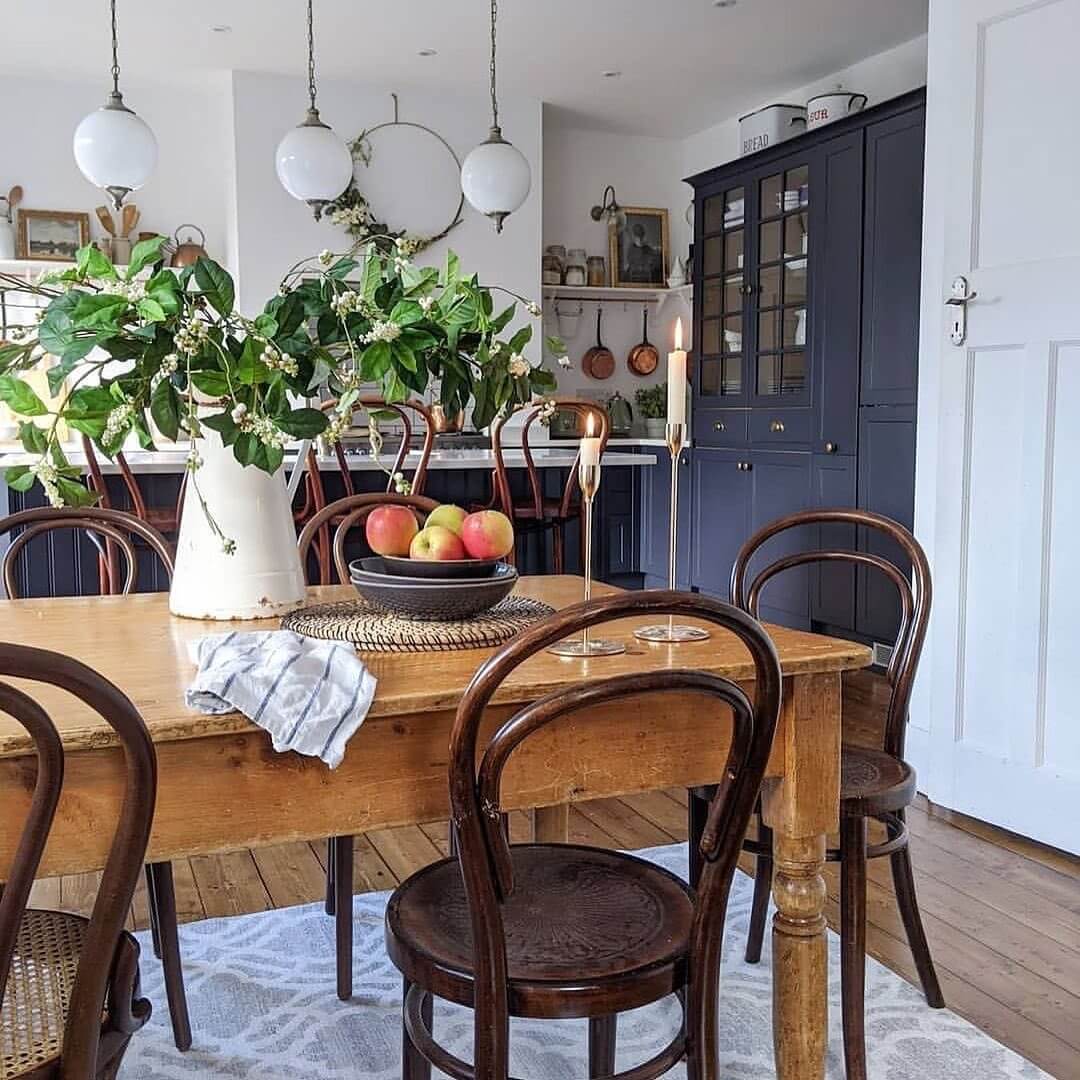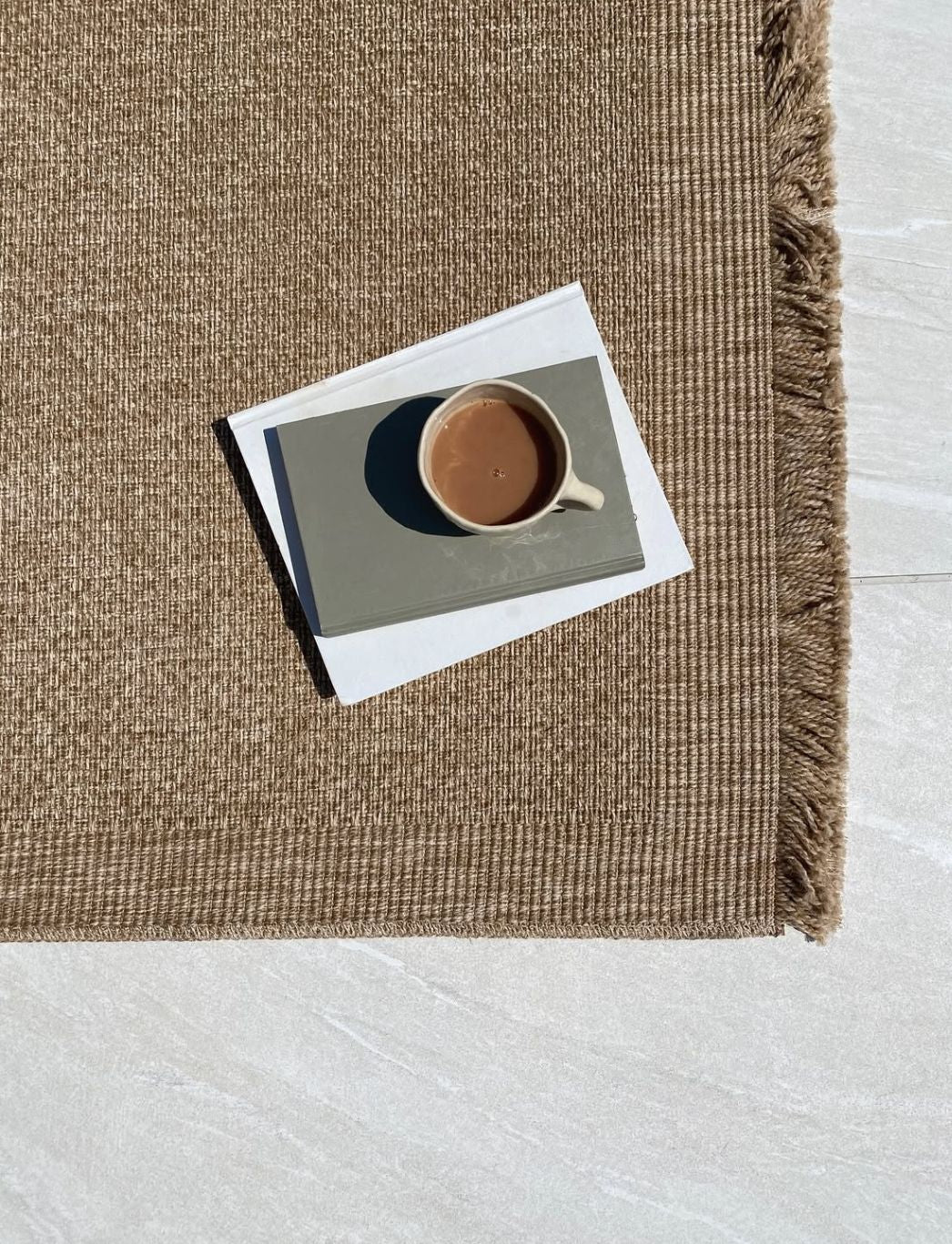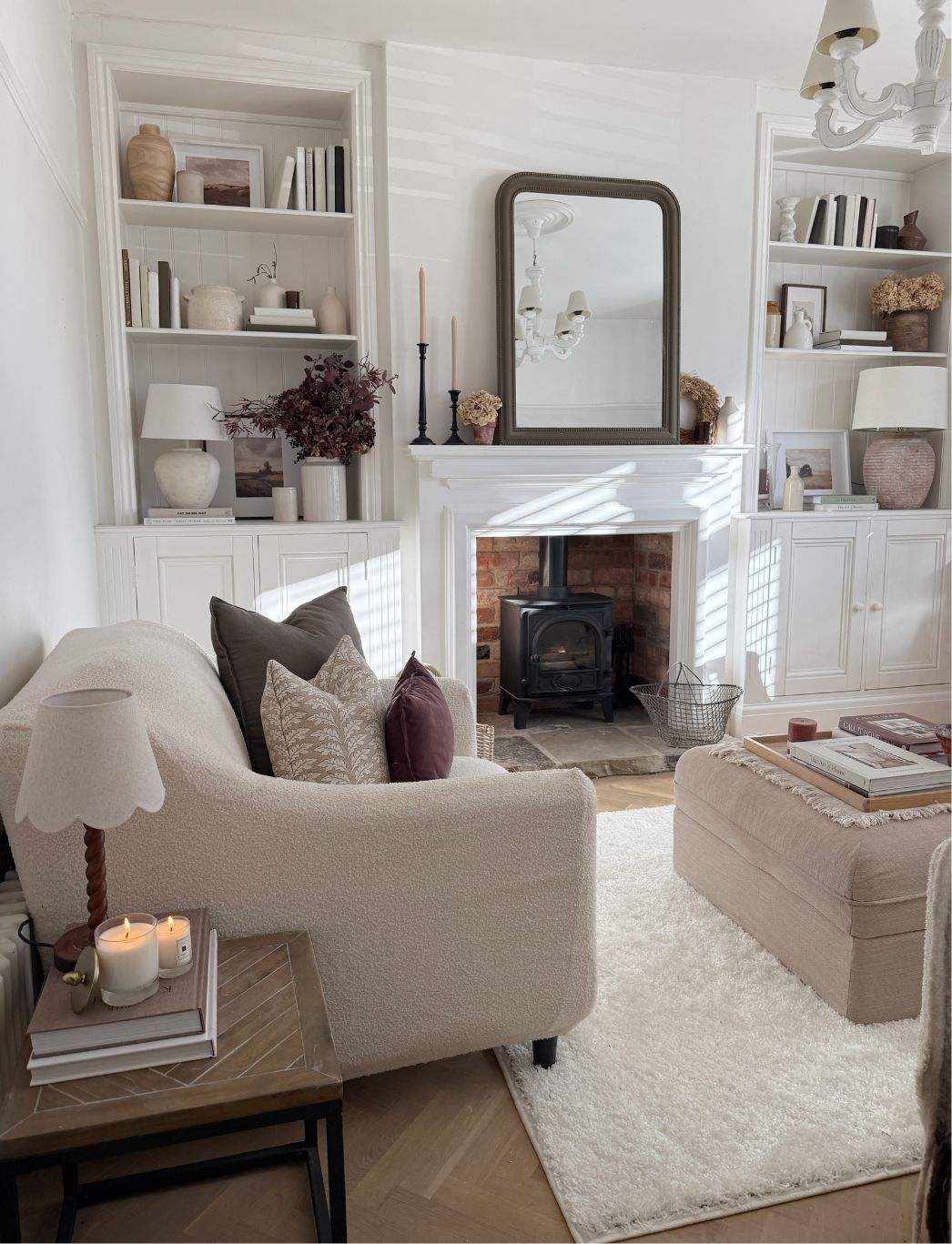What is a Kilim Rug? Discover Traditional Handwoven Beauty
Few pieces of décor tell a story quite like the timeless beauty of kilim rug. Handwoven with skill and symbolism, these flat-woven textiles have graced homes for centuries, carrying cultural meaning, colour, and craftsmanship in every thread. From traditional Anatolian villages to modern city apartments, kilim rugs continue to bridge past and present, offering both artistry and practicality.
Unlike pile rugs, kilims are made using an interlocking flat-weave technique, producing a lightweight, reversible texture that feels smooth underfoot. Each pattern is rich with symbolism, reflecting the weaver’s heritage, beliefs, and emotions. Over time, these designs have evolved into a global design favourite, admired for their versatility and expressive style.

A Journey Through Heritage and Design
Across regions such as Turkey and Afghanistan, kilim weaving remains a treasured art form passed down through generations. Turkish kilim rugs are celebrated for their symbolic motifs and balanced symmetry, while Afghanistan kilim rugs feature bold tribal geometry and earthy tones that bring warmth and authenticity to modern spaces.
For those drawn to heritage and charm, vintage and antique kilim rugs tell stories of time and tradition. Their softened tones, worn textures, and naturally aged dyes add an unmistakable sense of depth and soul to contemporary interiors.
Modern Interpretations for Contemporary Homes
Today’s designers have reimagined this age-old craft through modern kilim rugs. Clean lines, muted palettes, and geometric minimalism make them perfect for open-plan or minimalist homes. Available in a variety of materials, from pure wool to cotton blends, these rugs strike the ideal balance between tradition and functionality.

Colour, Symbolism, and Emotion
Every hue in a kilim rug carries meaning.
-
Blue kilim rugs evoke calmness and balance.
-
Green kilim rugs connect interiors with nature and renewal.
-
Pink kilim rugs introduce softness and joyful energy.
These colours, combined with timeless geometric motifs, allow kilims to complement virtually any décor style, from bohemian to Scandinavian.
Most kilim rugs are woven from natural wool, valued for its durability and ability to hold plant-based dyes beautifully. The use of sustainable materials and traditional techniques makes kilims an environmentally conscious choice for homeowners who appreciate both ethics and aesthetics.

Kilim Rugs in Modern UK Homes
Across the UK, kilim rugs have found a place in homes that value authenticity and character. Whether you choose a large kilim rug for your living room or a small kilim rug to accent a hallway, these versatile pieces adapt effortlessly to any setting. Their reversible structure and lightweight nature make them practical, easy to clean, and perfect for layering. With time and use, even the finest kilims may need gentle care. Kilim rug restoration helps protect the weave, colour, and history of each piece. Professional re-weaving, edge repair, and natural cleaning methods can revive a rug while maintaining its original integrity.
Explore Kilim Rugs at The Rugs
At The Rugs, you can discover a curated collection of kilim rugs UK in every style and colour, from traditional Turkish and Afghan designs to modern, vintage, and antique kilims. Each rug is handpicked for its quality, authenticity, and craftsmanship, allowing you to bring a touch of timeless artistry into your home. A kilim rug is more than decoration. It is history woven by hand, a story you can live with every day. Let’s discover kilim rugs even more.
What is a Kilim Rug?
A kilim rug is a traditional flat-woven textile known for its bold motifs, geometric patterns, and lightweight feel. Unlike pile rugs, kilims are woven without knots, resulting in a smooth, reversible surface that feels both artisanal and practical. Originating from regions such as Turkey, Afghanistan, and Persia, these rugs have become a global favourite for their timeless appeal and intricate craftsmanship.
The Craftsmanship Behind Flat Weave Kilim Rugs
What makes flat weave kilim rugs unique is their weaving technique. Instead of knots, artisans interlock coloured weft and warp threads to form detailed patterns. This method produces a flexible, lightweight rug that’s easy to move, fold, or hang as wall art. Its durability and breathable structure make it ideal for year-round use in both warm and cool interiors.
Turkish and Afghan Kilim Rugs
Among the most treasured are Turkish kilim rugs, recognised for their symbolic motifs representing love, protection, and prosperity. Afghanistan kilim rugs, on the other hand, showcase deeper tones and bold tribal geometry, adding an authentic, grounded energy to rustic or bohemian spaces. Design lovers can explore modern kilim rugs with simplified motifs and softer palettes, or opt for vintage kilim rugs that tell stories through their aged textures. Collectors often seek antique kilim rugs for their rare craftsmanship, cultural heritage, and hand-dyed colour variations that have beautifully matured over decades.
Wool Kilim Rugs and Their Natural Appeal
A wool kilim rug remains the top choice for its softness, warmth, and natural resilience. Wool fibres hold dye exceptionally well, giving each kilim a rich and lasting vibrancy. This makes it a sustainable and tactile option for those who appreciate eco-friendly interior choices. Whether you’re styling a large kilim rug under a living room sofa or placing a small kilim rug beside the bed, these versatile pieces adapt effortlessly to every setting. Their lightweight nature makes them easy to reposition or layer with other rugs for added depth and warmth.

Playing with Colour and Geometry
A blue kilim rug introduces calmness and coastal charm, while a green kilim rug brings an organic balance to neutral interiors. For a lively statement, a pink kilim rug adds softness and personality. A geometric kilim rug can also serve as a focal point, grounding the space with artistic rhythm. Across the UK, kilim rugs are loved for blending tradition with modern living. Their hand-woven texture complements wooden floors, minimalist décor, and layered textiles. Kilim rug restoration can involve reinforcing edges, tightening weaves, or restoring faded colours. To maintain their beauty, vacuum regularly, rotate for even wear, and schedule professional cleaning when needed.
Modern Kilim Rugs for Contemporary Homes
A modern kilim rug perfectly bridges tradition and contemporary style. While classic kilims carry intricate tribal patterns and bold colours, modern versions simplify these motifs. You’ll often see subtle tones, abstract lines, and minimalist shapes that feel right at home in today’s sleek interiors.
Redefining Tradition with Modern Design
The magic of kilim weaving is still present, but the visual language has evolved. Today’s designers reimagine old symbols with a softer, more balanced aesthetic. Think:
-
Clean geometric patterns that bring order and structure
-
Muted, earthy palettes for a calm, grounded atmosphere
-
Minimalist layouts that highlight negative space
The result is a rug that feels effortlessly timeless and modern, perfect for open-plan living rooms, calm bedrooms, or stylish home offices.
Materials and Texture in Modern Kilim Rugs
Most modern kilim rugs are woven from high-quality wool or wool-blend fibres, ensuring warmth, softness, and durability. Wool’s natural texture makes these rugs both tactile and inviting while keeping the signature flat weave that defines a kilim.
Some designs blend in cotton for a lighter, more breathable feel, ideal for layering or for homes in warmer climates.
Colour Palettes that Suit Every Home
Modern kilim rugs UK collections celebrate versatility. Instead of vibrant, contrasting tones, they lean towards subtle, modern hues such as beige, grey, taupe, and ivory, beautifully paired with soft accent shades.
Each colour brings its own personality:
-
A blue kilim rug introduces calm, coastal charm
-
A green kilim rug adds harmony and nature-inspired freshness
-
A pink kilim rug brings warmth and a modern, feminine feel
Geometric Kilim Rugs for Modern Spaces
A geometric kilim rug is a statement piece that adds rhythm and order to any room. Its symmetry and clean lines define areas in open-plan layouts while keeping the aesthetic light and modern.
Pair geometric kilims with:
-
Neutral or mid-century furniture for a cohesive balance
-
Metallic accents or glass decor to enhance contrast and texture

Perfect Placement for Modern Kilims
Modern kilims are incredibly versatile in placement:
-
A large kilim rug anchors the living or dining space beautifully
-
A small kilim rug fits entryways, bedside corners, or layered setups
-
Their lightweight nature makes them suitable for both indoor and outdoor use
Blending Modern Kilims with Different Interiors
The charm of a modern kilim rug lies in its flexibility. It can:
-
Soften industrial or urban interiors
-
Add warmth to Scandinavian-inspired spaces
-
Introduce texture to minimalist designs
Their flat weave also makes them an excellent option for high-traffic areas like hallways or kitchens, offering both durability and style. Across the UK, modern kilim rugs have become a favourite for design lovers who appreciate a mix of heritage and simplicity. They complement both contemporary flats and classic countryside homes.
Caring for Modern Kilim Rugs
Keeping your modern kilim rug looking fresh is easy:
-
Vacuum regularly to prevent dust build-up
-
Rotate occasionally to ensure even wear
-
Seek professional cleaning when needed to revive colours and strengthen edges
With the right care, your kilim rug will stay vibrant, stylish, and part of your home’s story for years.
Turkish Kilim Rugs and Their Enduring Legacy
A Turkish kilim rug is more than a floor covering; it’s a piece of cultural storytelling. Handwoven using traditional flat-weave techniques, each kilim represents generations of artistry, symbolism, and heritage. These timeless designs have become a favourite among homeowners who appreciate craftsmanship and character in their interiors. The roots of Turkish kilim rugs trace back centuries to Anatolian tribes who wove them as dowry pieces and home decorations. Each rug carried personal meanings, with colours and patterns symbolising emotions, wishes, and protection. Unlike pile rugs, kilims are created through interwoven threads, producing a durable and reversible textile with a naturally smooth texture.
Symbolism and Motifs in Turkish Kilims
Every Turkish kilim tells a story through its motifs. Common symbols include:
-
Elibelinde (hands on hips): representing femininity and fertility
-
Ram’s horn: symbolising strength and heroism
-
Eye motif: a charm for protection against negativity
-
Tree of life: a link between past, present, and future
These patterns, often repeated across the rug, give Turkish kilims their distinctive rhythm and emotional depth.
Colour Palette and Natural Dyes
Traditional Turkish kilim rugs use plant-based dyes derived from sources such as indigo, pomegranate, and madder root. The result is a warm, balanced palette that evolves beautifully with time.
-
Red tones symbolise happiness and energy
-
Blue reflects peace and loyalty
-
Green connects to nature and spiritual balance
-
Yellow represents joy and vitality
Modern artisans continue this tradition, creating rugs that feel authentic yet perfectly suited for contemporary interiors.
Turkish Kilim Rugs in Modern Homes
A Turkish kilim rug can effortlessly enhance any setting, from rustic cottages to modern apartments. Their intricate patterns and rich tones add warmth and character to minimal spaces. For example:
-
Place a large Turkish kilim rug under your living room furniture to ground the space.
-
Use a small kilim rug in hallways or bedrooms for a cosy, handcrafted accent.
-
Layer one over a neutral jute rug for added dimension and comfort.
Turkish vs Afghan Kilim Rugs
While both Turkish and Afghan kilims share a flat weave technique, their visual languages differ. Turkish kilim rugs often feature symbolic motifs and symmetrical designs, while Afghanistan kilim rugs use stronger contrasts and bolder tribal geometry. Together, they represent two unique expressions of traditional weaving.
Most Turkish kilim rugs are made from pure wool, valued for its resilience, softness, and ability to absorb dye deeply. This natural material ensures both comfort and longevity, making the rug suitable for high-traffic areas.

Care and Longevity of Turkish Kilims
To preserve their beauty, rotate your Turkish kilim rug occasionally and vacuum gently to remove dust. If needed, professional kilim restoration can reinforce edges and refresh faded tones, keeping the design vibrant for generations to come.
Vintage Kilim Rugs and Their Timeless Allure
A vintage kilim rug is a work of living history. Handwoven decades ago using age-old techniques, each piece carries stories of culture, craftsmanship, and time. These rugs have gained immense popularity among UK homeowners who appreciate authenticity and the charm of naturally aged textiles. Unlike modern reproductions, vintage kilim rugs show gentle wear that adds character rather than detracts from it. Subtle fading, softened edges, and muted tones give them a one-of-a-kind patina that feels warm and inviting. Each imperfection becomes part of the rug’s identity, celebrating the artistry of handmade work.
Traditional Techniques with Lasting Strength
Despite their delicate appearance, vintage kilims are remarkably durable. Skilled weavers used tightly interlocked wool fibres and natural dyes that have stood the test of time. This strength makes them suitable for both decorative use and practical everyday placement in living rooms, dining areas, or bedrooms.
Distinctive Patterns and Symbolism
The motifs seen in vintage kilim rugs reflect regional heritage and ancient storytelling. Common design themes include:
-
Geometric patterns symbolising unity and protection
-
Diamond shapes for clarity and focus
-
Tribal stripes that mark regional identity
-
Floral elements representing nature and prosperity
These symbolic details make each rug visually captivating while preserving its cultural narrative.
Colour Evolution Over Time
Natural dyes derived from plants and minerals mature beautifully over the years. The once-vivid reds, blues, and greens of vintage kilim rugs gradually mellow into earthy tones, creating a harmonious balance that suits both classic and modern interiors.
-
Faded reds bring a sense of warmth and nostalgia
-
Soft blues introduce tranquillity
-
Dusty pinks offer elegance and subtle charm

Styling Vintage Kilims in Modern Homes
Integrating a vintage kilim rug into a modern setting instantly adds soul and texture. Some popular styling ideas include:
-
Pairing a large kilim rug with minimalist furniture to create contrast
-
Using a small kilim rug as a statement piece in hallways or home offices
-
Layering a vintage rug over a neutral base rug for added depth
Their flat weave allows for easy layering, folding, and repositioning without bulk.
The growing interest in sustainable interiors has made vintage kilim rugs UK collections increasingly sought after. These rugs combine heritage with eco-friendly values, giving old pieces new life in contemporary homes.
Afghanistan Kilim Rugs and Their Tribal Soul
An Afghanistan kilim rug is a striking blend of craftsmanship, culture, and history. Handwoven by skilled artisans in rural Afghan regions, these rugs reflect centuries of tribal storytelling. With their bold geometry, earthy hues, and durable flat weave, they bring authenticity and warmth to any home.
Afghan kilims are traditionally woven by nomadic or village women using hand-spun wool dyed with natural pigments. Each rug tells a story of identity and belonging, often passed down through generations. The weaving process itself remains deeply symbolic, with patterns inspired by mountains, animals, and daily life in Afghanistan’s rural landscapes.
Distinctive Design and Colour
Afghanistan kilim rugs are instantly recognisable for their confident use of pattern and earthy tones.
Common features include:
-
Deep reds and russets symbolising life and vitality
-
Dark blues and browns reflecting strength and stability
-
Bold diamonds and stepped motifs representing protection and continuity
The combination of strong geometry and organic colour gives Afghan kilims a grounded yet powerful presence, making them perfect for interiors seeking depth and warmth.
Crafted from pure wool, Afghan kilims are known for their durability and resilience. The flat weave technique creates a lightweight, reversible surface that’s easy to maintain. Wool also absorbs natural dye beautifully, resulting in shades that soften gracefully over time without losing vibrancy.
Traditional Charm in Modern Homes
While rich in history, Afghanistan kilim rugs blend seamlessly into modern interiors. They can complement both rustic and contemporary styles with ease.
-
A large Afghan kilim rug anchors a spacious living area with character.
-
A small kilim rug adds texture and cultural flair to narrow spaces such as hallways or studies.
-
Layering them over neutral rugs creates a lived-in, collected aesthetic.
Their handmade texture pairs beautifully with wood, linen, or leather finishes, creating a look that feels warm and personal.

Comparing Afghan and Turkish Kilims
Although Afghanistan kilim rugs share weaving similarities with Turkish kilims, they tend to be bolder and more geometric, often featuring deeper reds and stronger contrasts. Turkish kilims are known for symbolic motifs, while Afghan designs focus more on rhythmic tribal patterns. Both, however, remain highly valued for their artistry and craftsmanship.
Across the UK, interior designers and homeowners alike are rediscovering the beauty of Afghanistan kilim rugs. Their rustic elegance fits perfectly into modern apartments or traditional cottages.
Care and Longevity of Afghan Kilims
To preserve your Afghanistan kilim rug, gentle maintenance is key.
-
Vacuum lightly on both sides using low suction.
-
Avoid moisture and direct sunlight to protect the natural dyes.
-
For older or delicate rugs, professional kilim restoration helps maintain weave integrity.
Antique Kilim Rugs and Their Enduring Elegance
An antique kilim rug is a masterpiece of heritage and artistry. Handwoven more than a century ago, each piece embodies a distinct era of craftsmanship. These rugs are not just decorative items but cultural artefacts, cherished by collectors and interior designers alike for their authenticity, rarity, and emotional depth.
The Meaning of “Antique” in Kilim Weaving
For a kilim rug to be considered antique, it typically needs to be over 80 to 100 years old. These rugs originated long before modern production methods, crafted entirely by hand through traditional weaving techniques handed down across generations. Each pattern tells a story of the community it came from, making it a bridge between the past and the present.
Antique kilim rugs are typically woven from hand-spun wool, occasionally mixed with cotton fibres to enhance durability. Natural plant and mineral dyes were used to colour the fibres, resulting in earthy, balanced tones that mature gracefully over time. The weaving process itself involved:
-
Interlocking threads to form flat, durable surfaces
-
Symmetrical, geometric motifs crafted by memory
-
Tight edges and borders that reinforced longevity
The outcome is a rug that stands as a testament to patience, precision, and artistry.
The Beauty of Naturally Aged Colour
Time transforms the appearance of an antique kilim rug in beautiful ways. Natural dyes fade into muted, harmonious shades, giving the rug an elegant and lived-in charm.
-
Soft terracotta and rust tones create warmth
-
Faded blues add tranquillity
-
Gentle greens and creams blend seamlessly into modern interiors
This subtle evolution of colour is one of the main reasons collectors value antique kilims so highly.

Recognising Authentic Antique Kilim Rugs
Genuine antique kilims have distinct signs of authenticity.
-
Slight irregularities in pattern or symmetry
-
Fading that follows natural use, not artificial distressing
-
Variations in wool thickness or weave tension
-
Visible signs of hand-spun yarn and organic dye
These details confirm the rug’s handmade origin and unique history, distinguishing it from modern reproductions.
Styling Antique Kilims in Modern Homes
While deeply traditional, antique kilim rugs can enhance contemporary spaces beautifully. Their understated tones and flat texture make them versatile for layering and mixing with modern décor.
-
Use an antique kilim rug as a centrepiece in the living room.
-
Combine it with minimalist furniture to create a striking visual contrast.
-
Layer it over a jute or neutral base rug for texture.
The combination of old-world charm and modern simplicity creates a perfectly balanced look.

Antique Kilim Rugs in the UK
In the UK, antique kilim rugs have become increasingly popular with collectors, stylists, and homeowners seeking pieces with depth and soul. Authentic antique kilim rugs UK collections at The Rugs feature handpicked designs sourced from trusted regions, offering buyers a genuine piece of textile history.
Caring for an antique kilim rug requires gentle attention to preserve its delicate fibres.
-
Avoid direct sunlight to maintain natural dye tones.
-
Use a soft brush or light vacuum for cleaning.
-
Consider professional restoration for frayed edges or weakened areas.
With proper care, an antique kilim remains a timeless heirloom that can be appreciated for generations.
Blue Kilim Rugs and Their Calming Appeal
A blue kilim rug brings serenity, depth, and elegance into any interior. Known for their intricate flat-weave design and symbolic use of colour, these rugs combine traditional artistry with a sense of calm that suits both classic and modern homes. Whether light and airy or deep and moody, blue kilims create a timeless statement in any space. In traditional kilim rug weaving, blue represents peace, protection, and spirituality. It was often used in tribal homes to invite calmness and harmony. This cultural symbolism still resonates today, making blue kilims a meaningful addition to restful areas like bedrooms and living spaces.
Shades and Styles of Blue Kilim Rugs
The beauty of blue kilim rugs lies in their variety of tones. Each shade brings a distinct mood and design possibility:
-
Navy blue adds sophistication and grounding depth
-
Sky blue brightens small or coastal-inspired spaces
-
Teal or turquoise introduces energy and vibrancy
-
Denim and dusty blues create a soft, vintage appeal
These versatile hues blend perfectly with neutral palettes, wooden floors, or metallic accents.
Patterns That Complement the Colour
The flat weave of a blue kilim rug allows intricate geometric motifs to stand out beautifully. From bold diamonds to repeating stripes, the patterns enhance the depth of the blue tones. A geometric kilim rug in blue can make a striking centrepiece in a minimalist room, while more muted designs work effortlessly in bohemian or rustic interiors.
Most blue kilim rugs are woven from pure wool, chosen for its warmth, durability, and natural sheen. The wool absorbs natural indigo dyes beautifully, resulting in rich tones that mellow gracefully over time. Some contemporary designs blend wool and cotton for a lighter, more flexible texture ideal for layering or small-space styling.
Styling Blue Kilim Rugs in Modern Homes
A blue kilim rug complements almost any interior theme, from coastal to industrial.
-
Pair a large kilim rug with cream or grey sofas for a balanced, calming effect.
-
Add a small blue kilim rug to hallways or reading corners for a touch of colour.
-
Layer one over a neutral jute rug for depth and texture.
Blue tones also pair beautifully with materials like rattan, oak, or brass, enhancing the overall sense of harmony. Homeowners across the UK are embracing blue kilim rugs as statement pieces that combine tradition with modern living. They bring colour without overpowering a room, making them a favourite among interior designers.

Care and Maintenance
To keep a blue kilim rug looking vibrant and clean:
-
Vacuum gently without harsh bristles
-
Rotate periodically for even wear
-
Avoid prolonged direct sunlight to prevent fading
-
Seek professional cleaning or kilim restoration when needed
With proper care, a blue kilim will retain its beauty, softness, and tranquil charm for decades.
Pink Kilim Rugs and Their Playful Sophistication
A pink kilim rug introduces warmth, creativity, and softness into any interior. Blending the artistry of traditional flat-weaving with a modern sense of colour, pink kilims have become a popular choice for homeowners looking to create spaces that feel elegant yet inviting.
In traditional kilim rug symbolism, pink represents love, happiness, and affection. Historically, it was used sparingly to highlight motifs of family unity and hope. Today, the same tone adds comfort and personality, brightening rooms while preserving the rug’s handcrafted heritage.
Shades and Styles of Pink Kilim Rugs
From muted pastels to vibrant fuchsia, pink kilim rugs offer endless possibilities for styling:
-
Blush and rose pink bring a gentle, romantic charm to bedrooms
-
Dusty pink works beautifully in modern and minimalist interiors
-
Coral and salmon tones add warmth to living areas or entryways
-
Deep magenta introduces a bold accent for eclectic homes
These shades complement natural woods, white walls, and metallic details like brass or gold.
Craftsmanship and Material Quality
Like all authentic kilims, pink kilim rugs are handwoven using a flat-weave technique. Most are crafted from pure wool, valued for its softness, durability, and ability to hold natural dye beautifully. Artisans often blend pink tones with neutral shades or geometric patterns, creating a perfect balance between tradition and contemporary design.
Geometric and Tribal Patterns
Pink kilims often feature geometric motifs inspired by regional symbolism.
Common patterns include:
-
Diamond shapes symbolising clarity and protection
-
Chevron or zigzag lines representing life’s journey
-
Small medallions or crosses adding structure and balance
These motifs give the rug visual rhythm, while the pink palette adds modern freshness.

Styling Pink Kilim Rugs in Modern Interiors
A pink kilim rug can completely transform a neutral room or soften bold décor.
-
Place a large kilim rug in the living room to introduce warmth underfoot.
-
Use a small pink kilim rug beside the bed for a cosy morning feel.
-
Layer one with a jute or ivory rug for added texture.
Pink works especially well with earthy tones, greys, and greens, creating a modern yet inviting aesthetic. Across the UK, pink kilim rugs have become a stylish choice for those who love colourful yet balanced interiors. They add charm without overpowering a space.
Caring for a Pink Kilim Rug
To keep your pink kilim rug looking bright and fresh:
-
Vacuum gently using low suction
-
Rotate regularly for even colour exposure
-
Avoid direct sunlight to preserve the pink tones
-
Seek professional kilim restoration if the edges begin to loosen
With proper care, your rug will maintain its beauty and warmth for decades, becoming a cherished part of your home décor.
Kilim Rug Restoration and Expert Care
A beautifully woven kilim rug can last for generations when properly cared for. However, time, foot traffic, and natural ageing can cause wear. Kilim rug restoration preserves both the look and the heritage of your rug, helping it remain vibrant, sturdy, and full of character for many more years.
Unlike machine-made rugs, kilim rugs are entirely handwoven, which makes restoration a delicate craft. Skilled restorers study the rug’s weave structure, fibre type, and dye composition before beginning any repairs. The goal is to retain the rug’s authenticity while reinforcing its original beauty.
Common Issues in Kilim Rugs
Over time, even well-maintained kilims may show signs of wear such as:
-
Frayed edges from repeated movement or folding
-
Loose threads where the weave has weakened
-
Colour fading due to sunlight or cleaning chemicals
-
Tears or holes in high-traffic areas
Each of these issues can be corrected by professionals who specialise in flat weave rug restoration.
The Restoration Process
Restoration usually follows several precise steps to ensure authenticity:
-
Assessment: Experts inspect the rug’s condition, weave style, and dye type.
-
Cleaning: Gentle, natural cleaning methods remove dirt and revive original colours.
-
Re-weaving or patching: Damaged areas are re-woven by hand to match the existing weave.
-
Edge and fringe repair: Reinforcing the borders prevents further unraveling.
-
Final finishing: The rug is blocked, brushed, and checked for uniformity.
Each stage requires patience and craftsmanship to maintain the rug’s character and integrity.
DIY Maintenance vs Professional Restoration
Regular home care can help delay the need for professional work. You can:
-
Vacuum gently using a soft brush attachment
-
Rotate the rug every few months for even wear
-
Keep it away from damp areas and direct sunlight
-
Roll, never fold, when storing to avoid permanent creases
However, for deep damage or antique pieces, professional kilim restoration is essential to ensure the weave and dyes are preserved correctly.
Restoring Colour and Texture
Over the years, natural dyes can fade into softer tones, which often adds charm. But when colour loss is uneven, experts can carefully re-dye or tint affected areas using plant-based pigments. This process restores balance without over-saturating or changing the rug’s authentic look.

When to Consider Restoration
You should consider kilim rug restoration when you notice any of the following:
-
The edges begin to fray
-
The weave feels loose or uneven
-
There are visible gaps or threadbare patches
-
The colours appear dull despite gentle cleaning
Early restoration prevents further damage and helps maintain both aesthetic and financial value.
Kilim Restoration Services in the UK
Across the UK, rug enthusiasts increasingly seek professional kilim rug restoration to protect their handwoven pieces. At The Rugs, we believe in the importance of preserving craftsmanship and history. Working with trusted specialists, every kilim rug UK customer can keep their treasured rugs in top condition while maintaining their cultural charm.
Proper restoration paired with mindful care allows a kilim rug to age gracefully. Rotate regularly, vacuum lightly, and clean professionally when needed. With these steps, your rug will remain a cherished part of your home for decades, carrying forward both beauty and tradition.
PEOPLE ALSO ASKED
What defines a kilim rug?
A kilim rug is defined by its flat-woven construction rather than a knotted pile. It is created by interweaving coloured wool or cotton threads on a loom, forming smooth, reversible surfaces with striking geometric or tribal patterns. This lightweight yet durable technique distinguishes kilims from other rug types, giving them a sleek texture and artisanal appearance.
Why are Kilim rugs so expensive?
Kilim rugs can be expensive because they are handwoven by skilled artisans using traditional techniques passed down through generations. The process is time-intensive and requires precision, especially when working with natural wool and plant-based dyes. Antique or vintage kilims are even more valuable, as their age, rarity, and craftsmanship make them highly sought-after collector’s pieces.
How can you tell a real kilim rug?
To identify a real kilim rug, look for:
-
Flat weave with no pile or tufting
-
Reversible design, meaning both sides display the same pattern
-
Irregularities in the weave or colour, showing it was handmade
-
Natural materials like wool or cotton fibres
-
Fading or dye variation, typical of plant-based dyes
Machine-made imitations often have uniform stitching and synthetic sheen, while genuine kilims feel soft yet sturdy.
Where do Kilim rugs come from?
Kilim rugs originate from regions across the Middle East, Central Asia, and North Africa, most notably Turkey, Afghanistan, Iran, and Morocco. Each region brings its own weaving traditions and symbolic motifs, resulting in distinct patterns and colour palettes. Turkish and Afghan kilims, in particular, are renowned for their historical significance and fine craftsmanship.
What are the benefits of owning a kilim rug?
Owning a kilim rug offers both aesthetic and practical advantages.
-
Lightweight and easy to move, perfect for layering or redecorating
-
Strong and long-lasting, making it perfect for high-traffic homes
-
Reversible design doubles the rug’s lifespan
-
Cultural heritage and handcrafted quality add authenticity
-
Natural materials like wool make them breathable and eco-friendly
Their versatility makes them suitable for living rooms, hallways, or even outdoor spaces.
Can a kilim rug be washed?
A kilim rug can be washed, but only with care. For light cleaning, shake or vacuum gently to remove dust. For deeper cleaning, it’s best to use professional rug washing services that specialise in flat-weave textiles. Avoid soaking or using harsh detergents, as they may damage the fibres or fade natural dyes.
What to put under a kilim rug?
To keep a kilim rug secure and protected, use a non-slip rug pad underneath. It prevents the rug from shifting on hard floors, provides extra cushioning, and helps preserve the weave. For thinner kilims, a felt or rubber pad adds comfort while maintaining airflow.
How thick are kilim rugs?
Kilim rugs are typically 3 to 6 millimetres thick, much thinner than pile rugs. Their flat, woven texture makes them easy to layer under furniture, doors, or other rugs. This lightweight structure also means they dry quickly, making them a practical choice for kitchens, hallways, and outdoor areas.
Do kilim rugs need a rug pad?
Yes, a kilim rug benefits greatly from a rug pad. Because of its flat weave and minimal thickness, it may slip or shift on smooth flooring. A pad prevents movement, protects the floor underneath, and adds a layer of softness without changing the rug’s sleek profile.
How to vacuum a kilim rug?
Vacuum your kilim rug gently using a low-suction setting or a brushless attachment. Always vacuum both sides occasionally to remove embedded dust. Avoid using beater bars or rotating brushes, as they can loosen the weave. For delicate or antique kilims, lightly shake or use a handheld vacuum to maintain texture.
How much does it cost to clean a kilim rug?
The cost of cleaning a kilim rug in the UK typically ranges from £30 to £100, depending on its size, material, and condition. Specialist rug cleaners use gentle washing methods that preserve the natural dyes and fibres. Antique or delicate kilims may require additional restoration or hand-cleaning, slightly increasing the price.
Do kilim rugs slip?
Yes, kilim rugs can slip, especially on smooth floors like wood or tile, because of their lightweight, flat-woven texture. Using a non-slip rug pad or underlay ensures safety and stability while helping the rug maintain its shape and position.
How to hang a kilim rug on the wall?
To hang a kilim rug safely, use a rod or hanging sleeve sewn along the top edge. You can also attach Velcro strips or rug clips that distribute weight evenly to prevent sagging. Always avoid nails or pins, as they can damage the fibres. Wall-hanging a kilim turns it into a striking art piece that highlights its intricate patterns.
How to fade a kilim rug?
If you prefer a softer, vintage look, you can fade a kilim rug naturally by placing it in indirect sunlight for short periods. Rotate regularly to ensure even fading. Avoid bleach or chemical cleaners, as they can harm the fibres. Over time, natural light and gentle washing will create an authentic aged patina.
What is the difference between carpet and kilim?
The main difference between a carpet and a kilim lies in their construction. Carpets are knotted pile rugs with a raised surface, while kilims are flat-woven with no pile. Carpets feel thicker and more cushioned, whereas kilims are lightweight, reversible, and ideal for layering or warmer climates.
Do kilim rug patterns have meaning?
Yes, kilim rug patterns often carry symbolic meanings passed down through generations. Common motifs include:
-
Elibelinde (hands on hips): symbolising fertility and femininity
-
Eye motifs: offering protection from negativity
-
Ram’s horn: representing strength and courage
-
Tree of life: symbolising growth and interconnectedness
These designs give every kilim a cultural story and spiritual depth.
What material is used for kilim rugs?
Most kilim rugs are woven from natural wool, known for its durability and ability to hold dye beautifully. Some kilims also use cotton, goat hair, or silk blends to create texture variations. Wool remains the most traditional and eco-friendly choice, giving kilims warmth, softness, and resilience.










Leave a comment